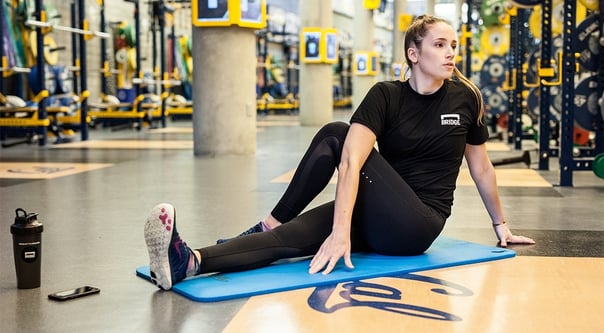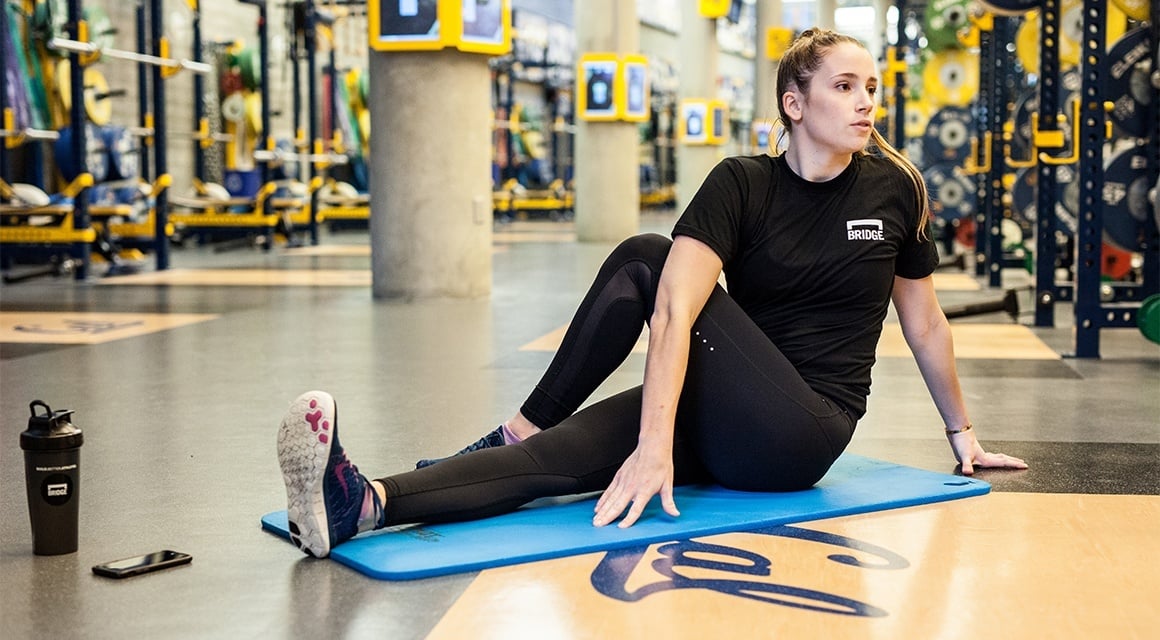Customize Recovery: Collegiate Athletes

Recovery is an important process to implement in training programs for athletes at all levels in order to prevent injury, reduce fatigue, and enhance athletic performance. Immediately after a practice or competition, athletes should actively cool-down and recover using certain methods. All recovery techniques are valuable for athletes at any level, however there are some unique methods that should be emphasized at the collegiate level. Intense college training demands more specific recovery methods. As athletes shift from high school to college, heavy weight training becomes a top priority to enhance athletic performance. Athlete recovery at this stage should focus on repairing muscles.
Foam Rolling
One of the primary methods to combat muscle soreness from strength training and enhance athletic performance is foam rolling. The rolling motion of your body over a foam cylinder mimics a massage, applying pressure to sore areas in an attempt to release muscle tension and lengthen out tight tissue. Athletes should spend 5-10 minutes each day on a foam roller to maintain full range of motion throughout a heavy week of training. To learn more about foam rolling check out this article.
Ice Baths
Another common recovery method for collegiate athletes is the use of an ice bath. The cold temperature is meant to help accelerate lactate clearance from muscles by taking advantage of how the body’s circulation changes with temperature. Although research surrounding the benefits of ice baths is inconclusive, many athletes find it helpful. To learn more about ice baths check out this article.
Protein
Nutrition and protein intake becomes more important for athletes at the collegiate level. Freshmen make the transition from home-cooked meals to cafeteria dining halls and must learn to pick healthy meals and avoid the ice cream station. Athletes should eat a combination of carbohydrates and protein to promote protein synthesis in muscles so they can maximize strength gains from that day’s training. On the other hand, insufficient protein intake can lead to extended fatigue and an inability to put on muscle or recover. To learn more about nutritional habits for student-athletes check out this article.
Sleep
At the collegiate level, athletes are training more intensely and need to make up for that increase in exertion with additional rest during the week. College academic schedules typically allow students to have more flexibility and free time during the day. Athletes should manage their time wisely and incorporate short 30-40 minute naps to replenish their energy and enhance recovery. To learn more about naps check out this article.
Recap
Athletes at all levels should make the recovery process a top priority. Recognizing collegiate athlete needs and differences is helpful when implementing certain recovery techniques. While youth athletes are naturally efficient at recovering quickly on their own, older athletes must take extra steps to recover. From taking ice baths to fueling the body with protein to taking naps, there are many effective ways to help athletes return to full speed and ultimately enhance athletic performance.

About the Author

At Bridge, we are all athletes and coaches first. As athletes, our team has experienced everything from riding the pine on JV, to winning NCAA championships, to competing in the Olympic Games. As coaches, we have helped countless athletes reach their full potential, winning everything from age group section championships to Olympic Gold Medals.
Related Posts

The Best Bench Press Variation You’re...
This post is part of our Coaches Corner series with Taylor Rimmer. Taylor is NSCA-CPT, StrongFirst...

Does Powerlifting Harm Heart Health?
A recent study has discovered that a 12-week supervised strength training program (SSTP) may result...
-1.png)
Barefoot Running: Is It For You? |...
Run Free: Consider Less Cushion
Updated October 2020:
With more athletes looking for ways to...

